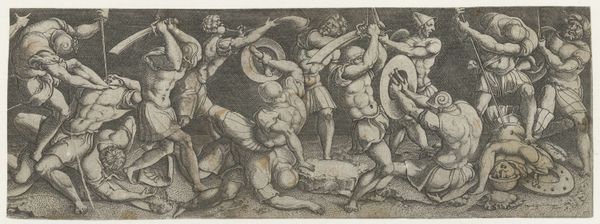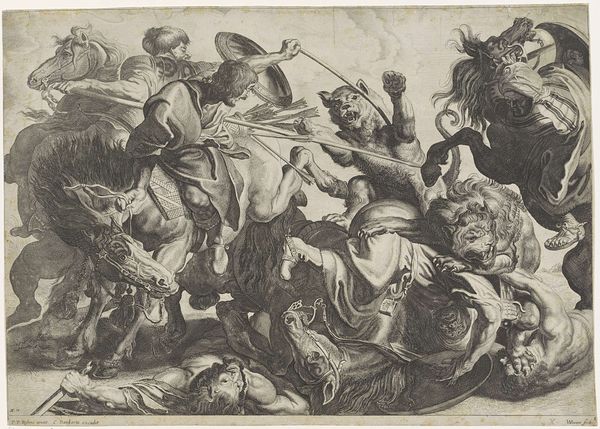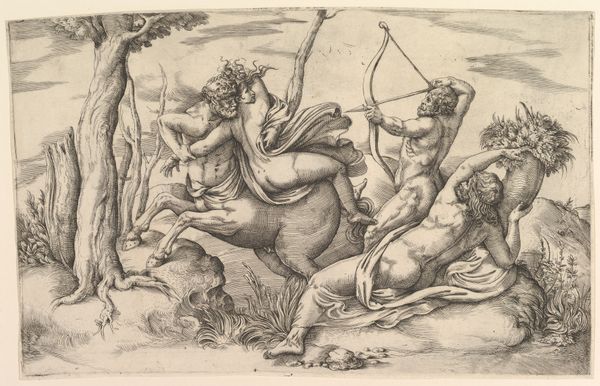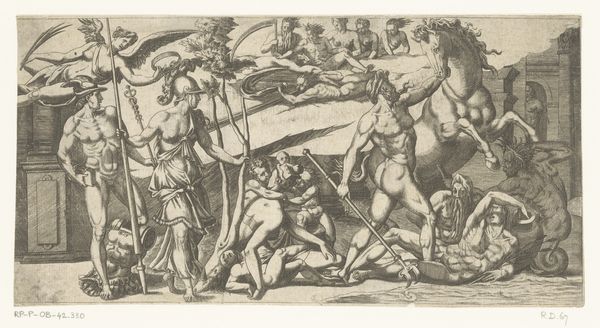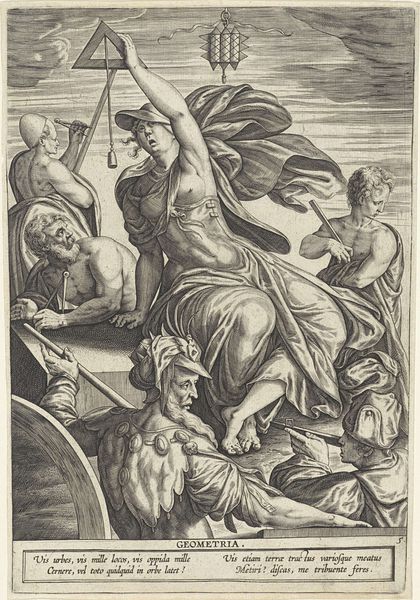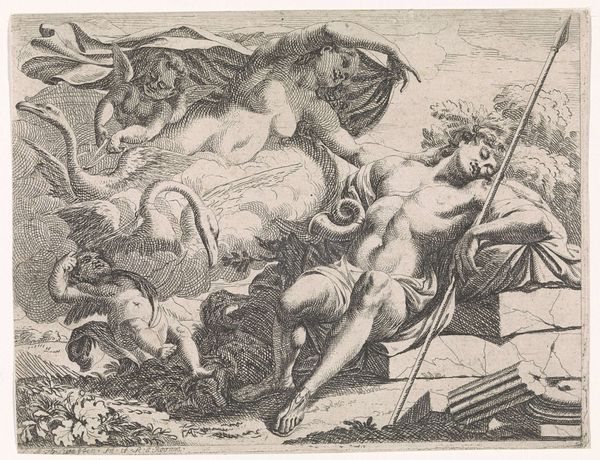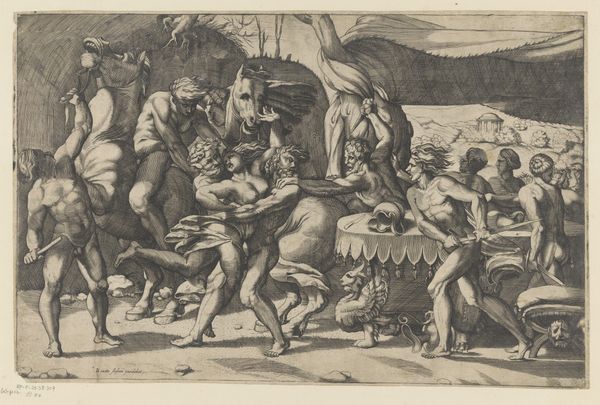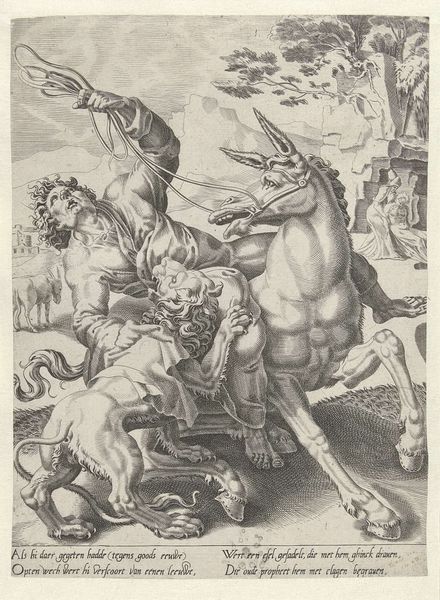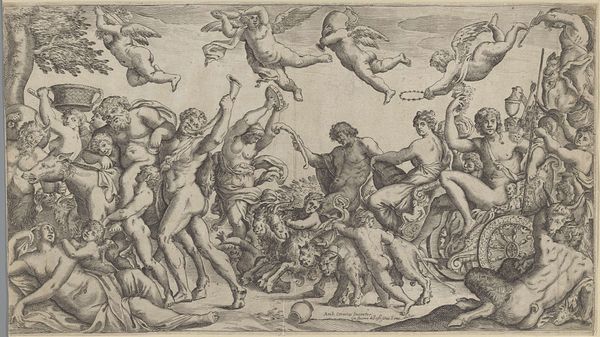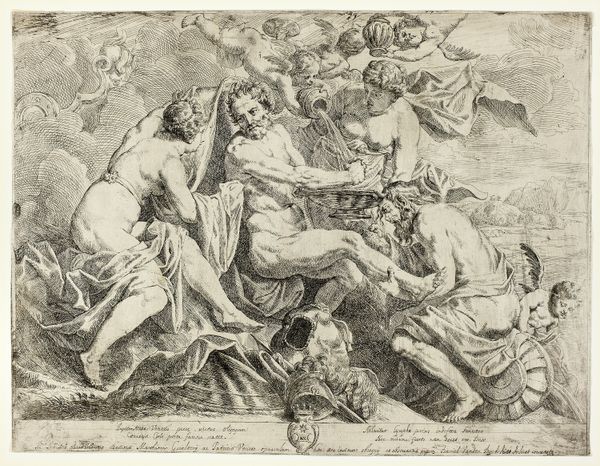
engraving
#
mannerism
#
figuration
#
11_renaissance
#
history-painting
#
engraving
Dimensions: height 92 mm, width 306 mm
Copyright: Rijks Museum: Open Domain
Editor: This is "Gevecht tussen Romeinse cavaleristen en infanteristen," or "Battle between Roman Cavalry and Infantry," by Etienne Delaune, made sometime between 1528 and 1583. It's an engraving, and I'm immediately struck by the dynamism of the scene, how chaotic and violent it feels. What details stand out to you? Curator: For me, the most compelling aspect is Delaune’s engagement with the very *process* of creating this image. An engraving involves meticulous labor, using tools to physically carve lines into a metal plate. Considering the widespread distribution of prints during the Renaissance, what impact might these accessible images have had on social perceptions of war? Editor: That's an interesting angle. I was thinking about the composition itself, the figures crammed together in a narrow space. The lines are so dense. Does the medium influence the message here? Curator: Absolutely. The density you observe speaks to the limitations and the strengths inherent in the material. Think about it – each line represents a deliberate, physical act. This physicality underscores the brutality of the depicted battle, perhaps even elevating its importance. The mass production of engravings allowed for dissemination, thus turning a historical scene into a widely-held cultural memory. How do you view the implications? Editor: So, by turning war into something reproducible, an object of consumption, Delaune is engaging with both art and, essentially, propaganda? Curator: Precisely. Consider also the accessibility of prints like these. While paintings remained in wealthy homes or palaces, engravings circulated amongst a wider audience, influencing perceptions beyond the elite. The materials used, the printing process, and their resulting availability become crucial elements. Editor: I never considered it from that viewpoint – how the means of production could be as important as the subject itself. Thank you! Curator: Indeed, this piece offers us a chance to explore how art objects carry meanings beyond their surface representations. We can really see the dialogue between production and social messaging.
Comments
No comments
Be the first to comment and join the conversation on the ultimate creative platform.


